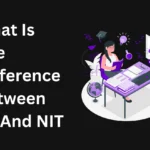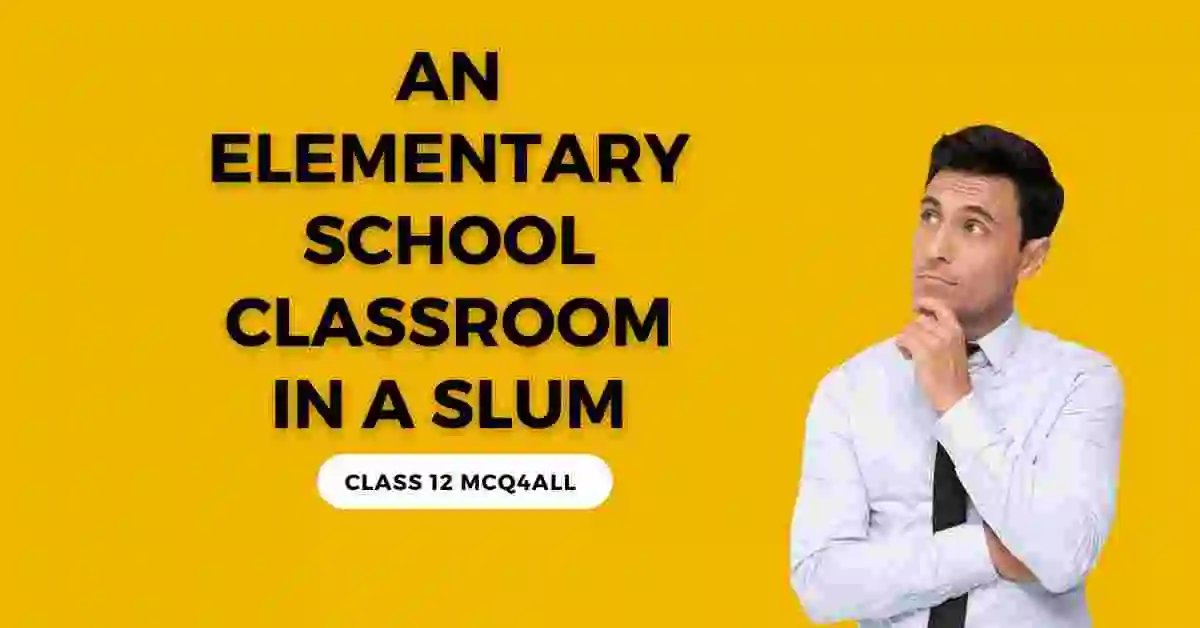A poem may appear difficult to understand, especially when contemplating a serious matter. A common poem studied by most students is “An Elementary School Classroom in a Slum” by Stephen Spender. It allows us the opportunity to examine closely the lives of children living in very poor areas. The words have great power in conveying the message that life is unfair for some children.
Here, in the article, the poem is explained in easy language. MCQs with answers are also provided to reinforce your learning. Our motto is to simplify your understanding of the poem and help you prepare well for the exams.
What Is “An Elementary School Classroom in a Slum” About?
This poem, written by Stephen Spender, sheds light on the very hard life that exists in the slums for the children. These children do attend schools, but the classrooms are shadowy and dull; full of sorrow is their existence. The least the poet asks of us is that we feel what they feel and then think of a way to help them.
The poet delivers striking images and words to describe the difficulties faced by the children. He mourns their existence without a future unless someone intervenes for them. The poet asks us to see the problems and change them.
Main Ideas in the Poem “An Elementary School Classroom in a Slum”
- The Pain of Poverty
Children in slums lead wretched lives. Their clothes are dirty, their faces are long, and their bodies are weak. Poets say they do not stand a chance against the other children. They are entangled and trapped in a place that has nothing to tell them about any chance of hope.
- A Classroom That Shows Neglect
The walls of the classroom seem to be painted sour cream color, and that means they are old and filthy. The room is full of torments; it feels as if nobody cares for the children and their learning atmosphere.
- A World That Feels Far Away
The wall was adorned with beautiful paintings of mountains, rivers, and maps of the world. These artworks depict a life that the children can only dream about. The further the children find themselves from such beautiful scenery, the sadder their own life seems, which the pictures have somewhat made evident.
- A Strong Call for Change
However, in the last lines of the poem, the poet leaves us with a note of hope. He hopes that the walls surrounding them will be broken down. They should see the sun, play in green fields, and read real books. Dream and be free to grow.

Poetic Tools in the Poem “An Elementary School Classroom in a Slum”
The poet achieves his work with simple mechanisms; these make the communication stronger between him and the recipient.
- Simile: The children are seen as “rootless weeds,” which indicates their having become unwanted.
- Metaphor: Their future is described as “painted with a fog,” which means unknown and sad.
- Alliteration: The phrase “sour cream walls” creates rhythm and a picture.
- Irony: Beautiful pictures stare within walls filled with sadness.
- Tone: The tone is serious yet compassionate.
Elementary School Classroom in a Slum MCQ Questions and Answers
Here are easy-to-understand MCQs to help you revise the poem. They are perfect for tests and practice.
- Who wrote the poem “An Elementary School Classroom in a Slum”?
- A) Robert Frost
B) Kamala Das
C) Stephen Spender
D) Pablo Neruda
Answer: C) Stephen Spender
Why? Stephen Spender was a poet who cared about fairness and wanted to speak up for poor people.
- What is the poem mainly about?
- A) Fun at school
B) A walk in the forest
C) Poor children in a slum school
D) A game in the rain
Answer: C) Poor children in a slum school
Why? The whole poem talks about how hard life is for children who live in slums.
- What do “sour cream walls” tell us?
- A) The walls are tasty
B) The classroom is colorful
C) The walls are old and dull
D) The walls are freshly painted
Answer: C) The walls are old and dull
Why? “Sour cream” means pale, showing no color or life in the classroom.
- What does “their future is painted with a fog” mean?
- A) They are going on a trip
B) Their future is not clear
C) They love art
D) They are playing with fog
Answer: B) Their future is not clear
Why? Fog makes it hard to see. The poet means their future looks dark and uncertain.
- What do the pictures on the wall show?
- A) Their home
B) Their classroom
C) Places they can’t reach
D) Their lunch
Answer: C) Places they can’t reach
Why? The pictures show a world full of beauty that they may never see.
- What does the poet want in the end?
- A) For the children to stay in school
B) For the classroom to be cleaner
C) For change and freedom
D) For more homework
Answer: C) For change and freedom
Why? The poet asks people to break down the walls of the slum and give these children a better life.
- What does “rootless weeds” mean?
- A) Plants in the garden
B) Kids without care
C) Kids with long hair
D) Children dancing
Answer: B) Kids without care
Why? Just like weeds without roots are weak and unwanted, these children are not looked after.
- What is the tone of the poem?
- A) Happy
B) Funny
C) Sad and serious
D) Playful
Answer: C) Sad and serious
Why? The poet wants us to feel sorry for the children and think seriously about helping them.
- What does “sealed in with a lead sky” mean?
- A) A bright sky
B) A heavy, sad sky
C) A roof made of metal
D) A sunny day
Answer: B) A heavy, sad sky
Why? “Lead” is heavy, so it shows a feeling of pressure and sadness.
- How does the poet think these children can be helped?
- A) By giving them food
B) By letting them sleep
C) By showing them the real world
D) By closing the school
Answer: C) By showing them the real world
Why? The poet believes they need freedom, nature, and real learning.
Conclusion
It is not simply a classroom in the poem. It is a group of children shut away from the world. Their school is inherently unhappy. It is a place with sadness and unfulfilled dreams. But still, the concluding lines of the poem assert that there is light at the end of the tunnel.
Stephen Spender urges us into action: for the slum children to have chances for fresh air, sunshine, and an opportunity to grow. We need to remove the barriers behind which they are imprisoned. Every child, however born, must be able to dream, study, and live free.











